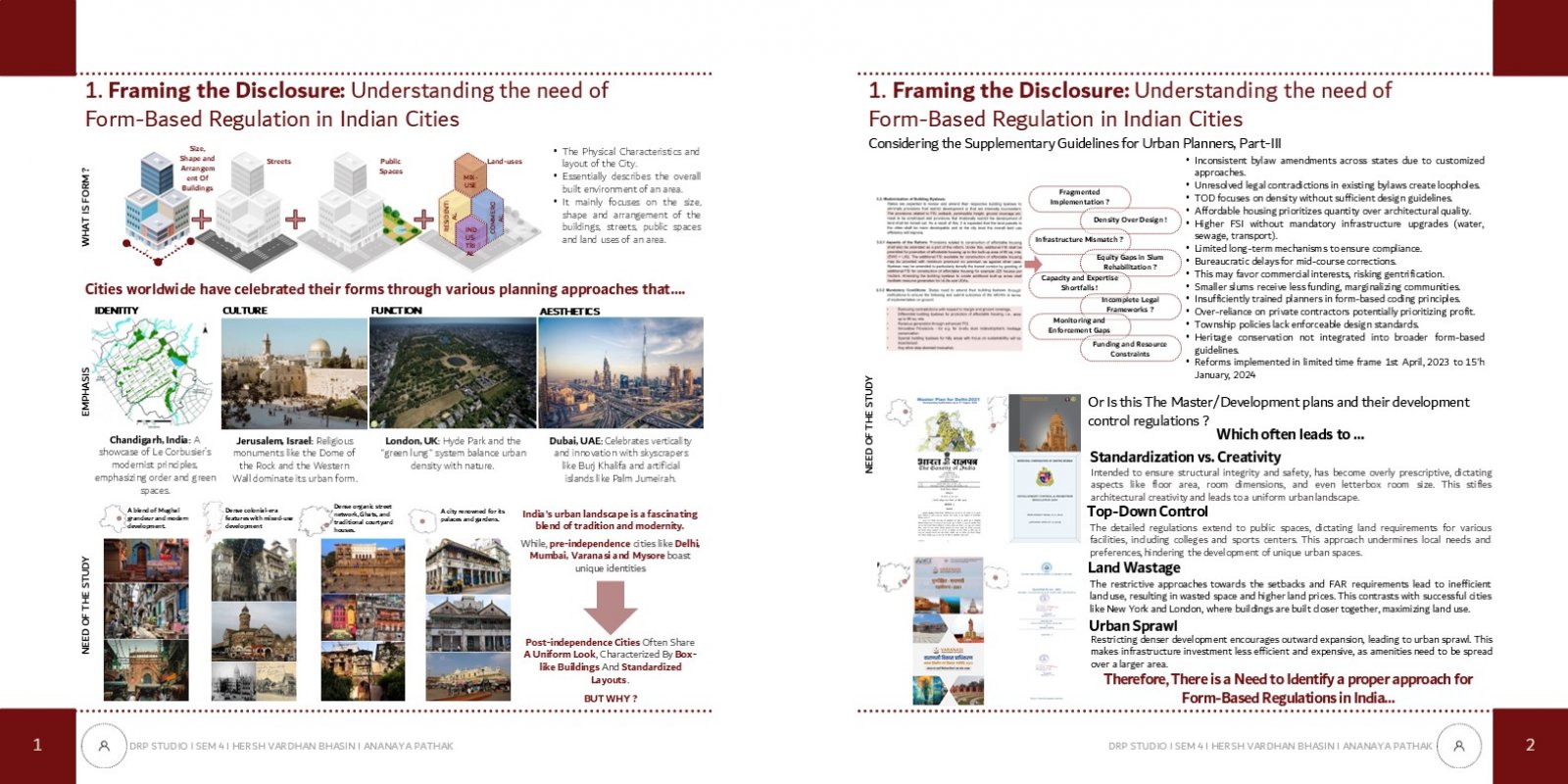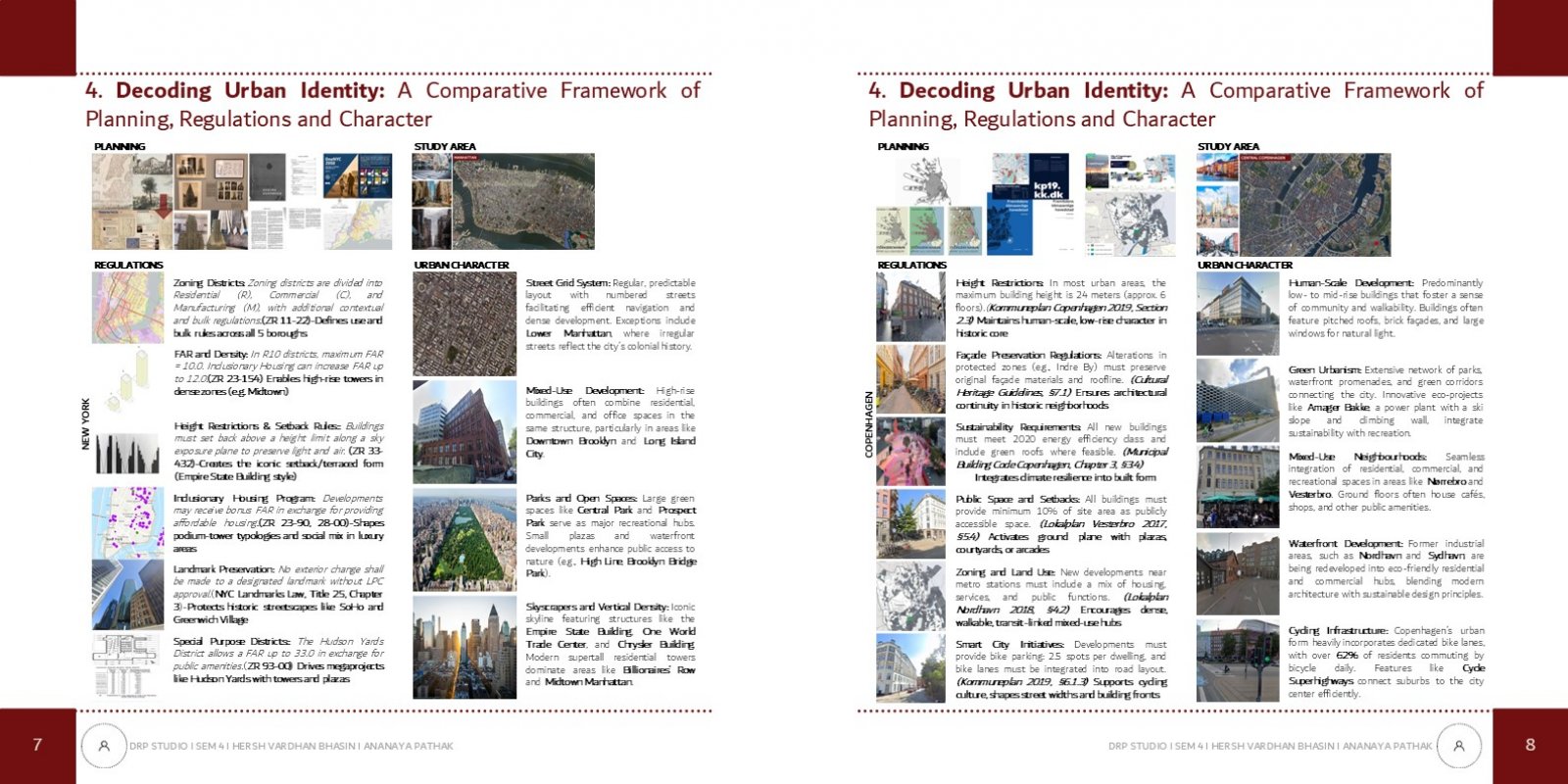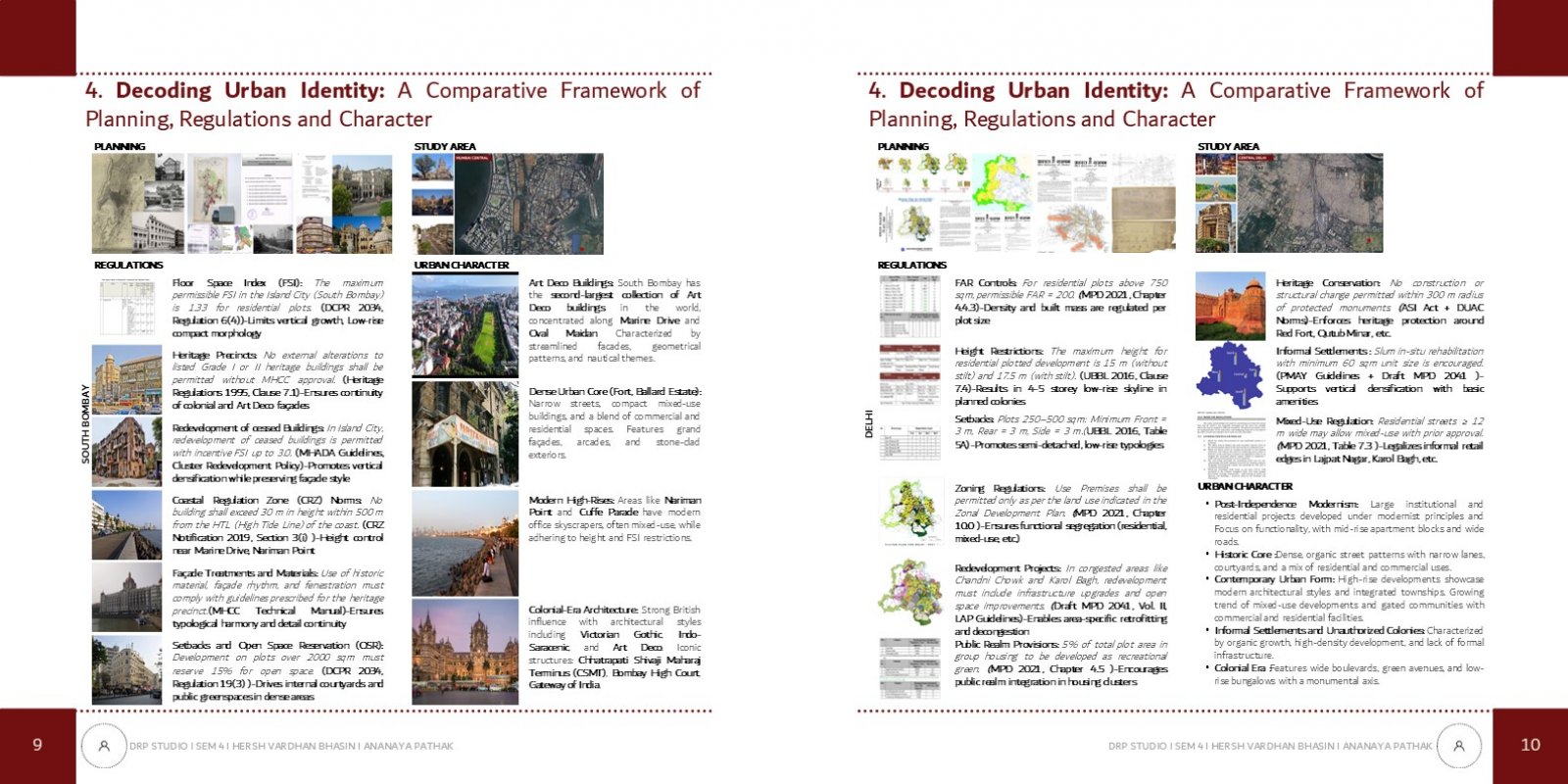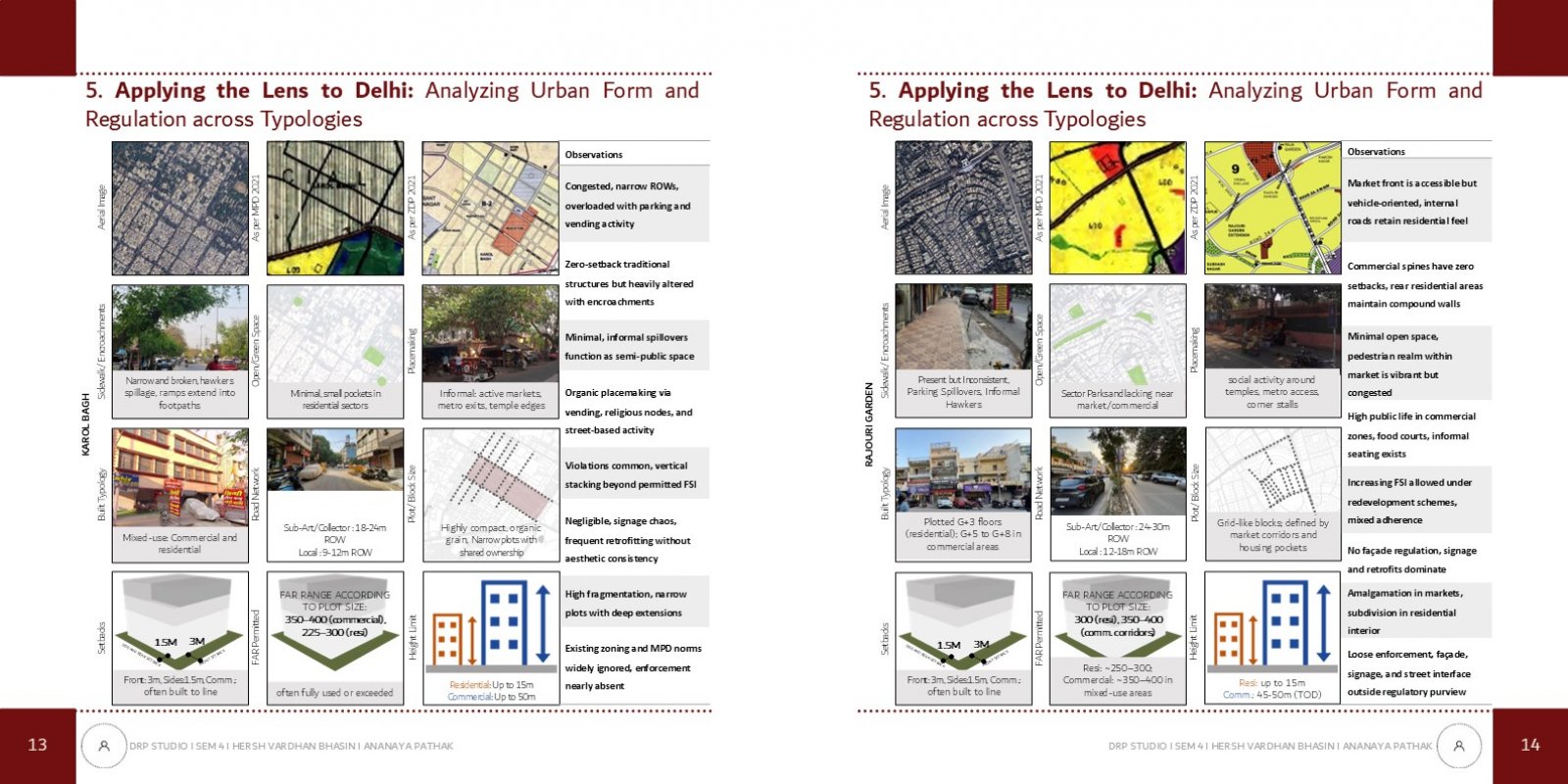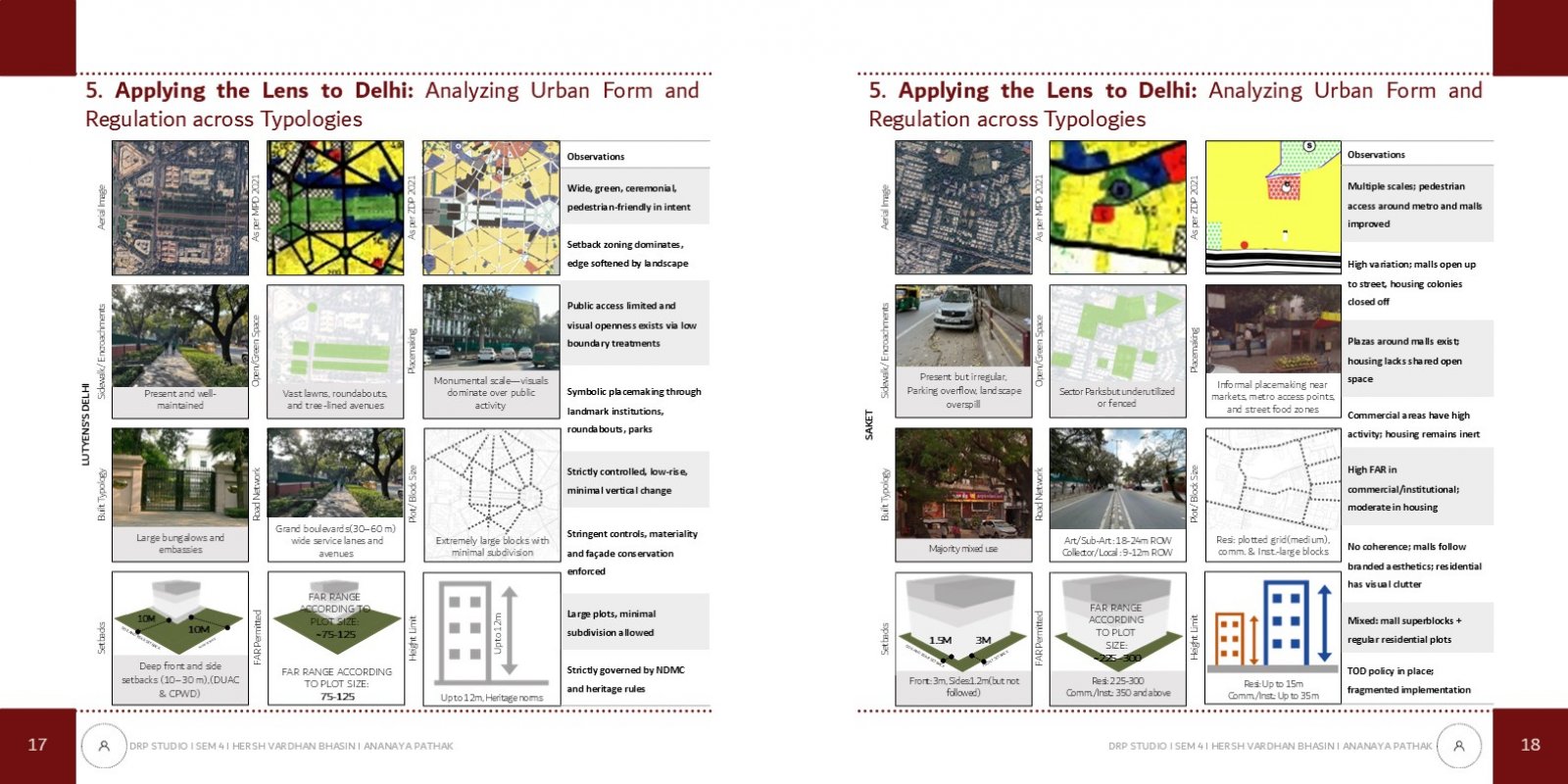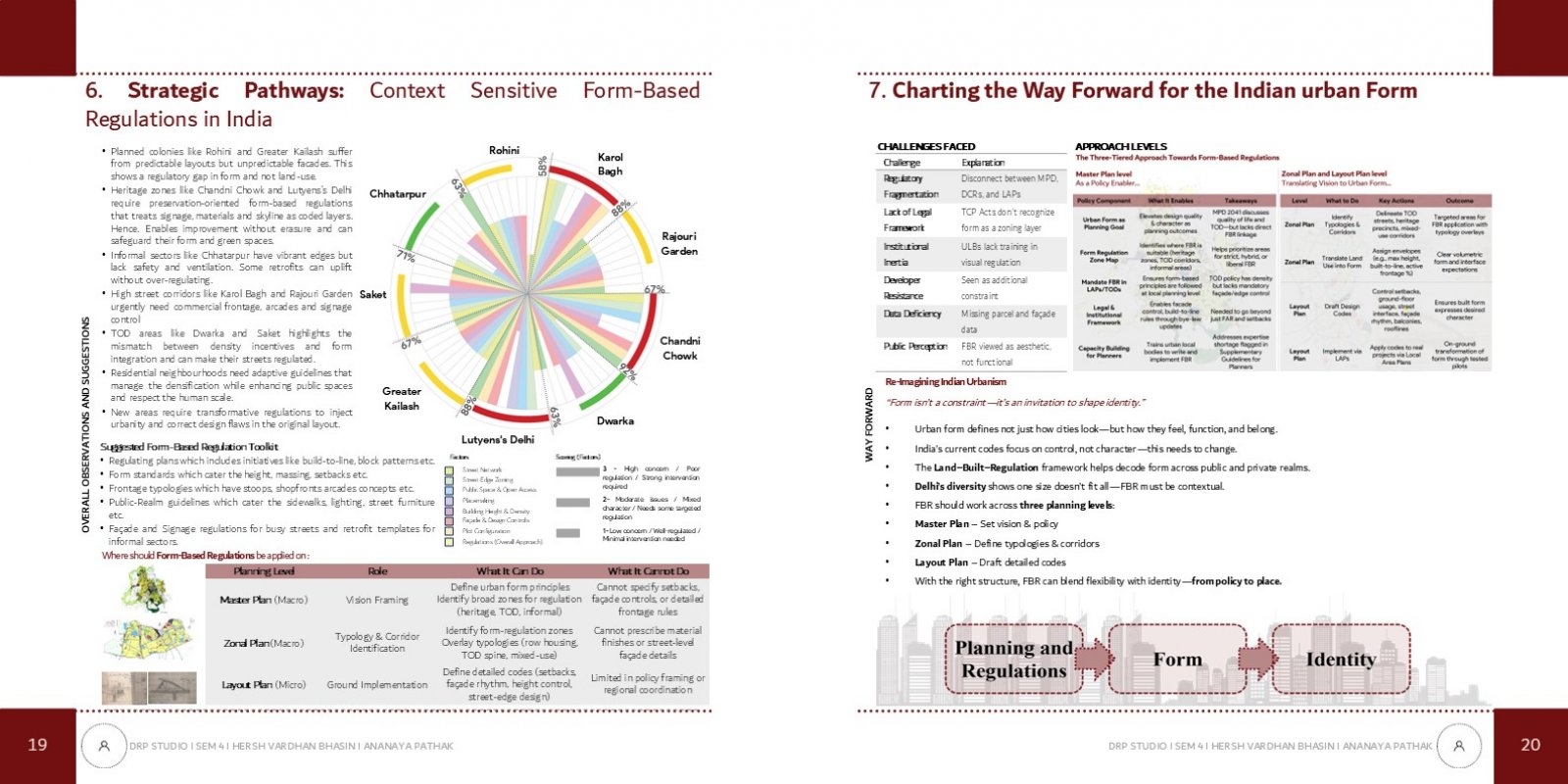Your browser is out-of-date!
For a richer surfing experience on our website, please update your browser. Update my browser now!
For a richer surfing experience on our website, please update your browser. Update my browser now!
This research explores the relevance and application of form-based regulations in Indian cities by examining global case studies and deeply analyzing Delhi’s urban fabric. It critiques the limitations of India’s current zoning practices and proposes a contextual, character-sensitive regulatory approach. Using a Land–Built–Regulation framework, the study categorizes urban areas by typology and development patterns, highlighting gaps between regulation and lived form. The report recommends a spectrum-based model tailored to diverse Indian urban conditions, emphasizing the integration of public-private realms, street character, and built form. Ultimately, it aims to guide more inclusive, flexible, and identity-driven urban development strategies for India.
